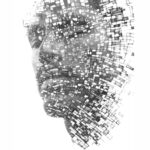Reinforcement learning reproduces the “natural” mechanism of knowledge acquisition. Robot, chatbot, autonomous car, its applications are multiple in artificial intelligence.
Reinforcement learning implements learning algorithms that learn from repeated experiences by trial and error. It thus reproduces the “natural” mechanism of knowledge acquisition.
To guide learning in the desired direction, reinforcement learning algorithms validate the decisions made by the machine via a reward or penalty mechanism. One could compare the process to training.
What are reinforcement learning algorithms?
The two most famous reinforcement learning algorithms are TD learning (for temporal difference learning) and Q-learning. These learning models are inspired by the human (and animal) process of acquiring knowledge through trial and error.
What is the advantage of reinforcement learning?
The main advantage of reinforcement learning is that to program a robot, for example, there is no longer any need for long and tedious development work. The computer will learn to operate, to react to this or that event or request by itself.
Whether the robot is physical or virtual, the learning phase will be carried out in the form of a digital simulation. This operating mode optimizes the learning time.
What is deep reinforcement learning?
Classified as automatic (or unsupervised) machine learning, reinforcement learning generally relies on neural networks in order to efficiently estimate the validity of a “complex” strategy, with a large number of choice criteria to be taken into account. This is called deep reinforcement learning (DRL). The main challenge is to achieve a system that encourages the desired behaviors, without undesirable side effects.
Often presented as the ultimate AI, DRL allows the creation of software capable of reaching or even surpassing human intelligence in several domains. The most famous system taking advantage of the method is none other than DeepMind, Google’s AI platform (resulting from the 2014 acquisition of the British company of the same name). It is on it that the American giant based itself to develop AlphaGo, the supercomputer known for having defeated in 2017 the world champion of go, the Chinese Ke Jie.
Examples of reinforcement learning
Deep reinforcement learning is used in many areas:
- Robotics in factories and warehouses to allow automata to learn by themselves how to lay down a new part model without prior programming.
- Calibration and quality control of industrial systems, whether they are focused on manufacturing, supply chain or energy production,
- Finance to optimize automated trading or market risk management,
- Text summarization to estimate the overall quality of a summary by extracting from a word by word logic,
- Game and recommendation engines for developing strategies in uncertain environments,
- The autonomous car to improve the vehicle’s ability to react to a given traffic event,
- …


